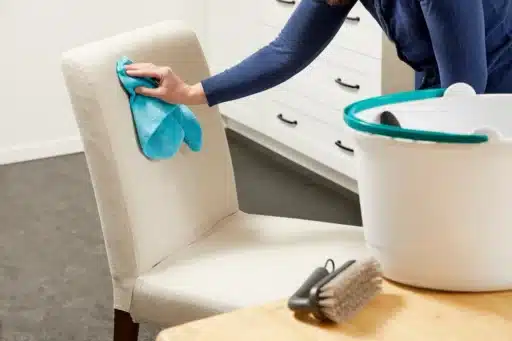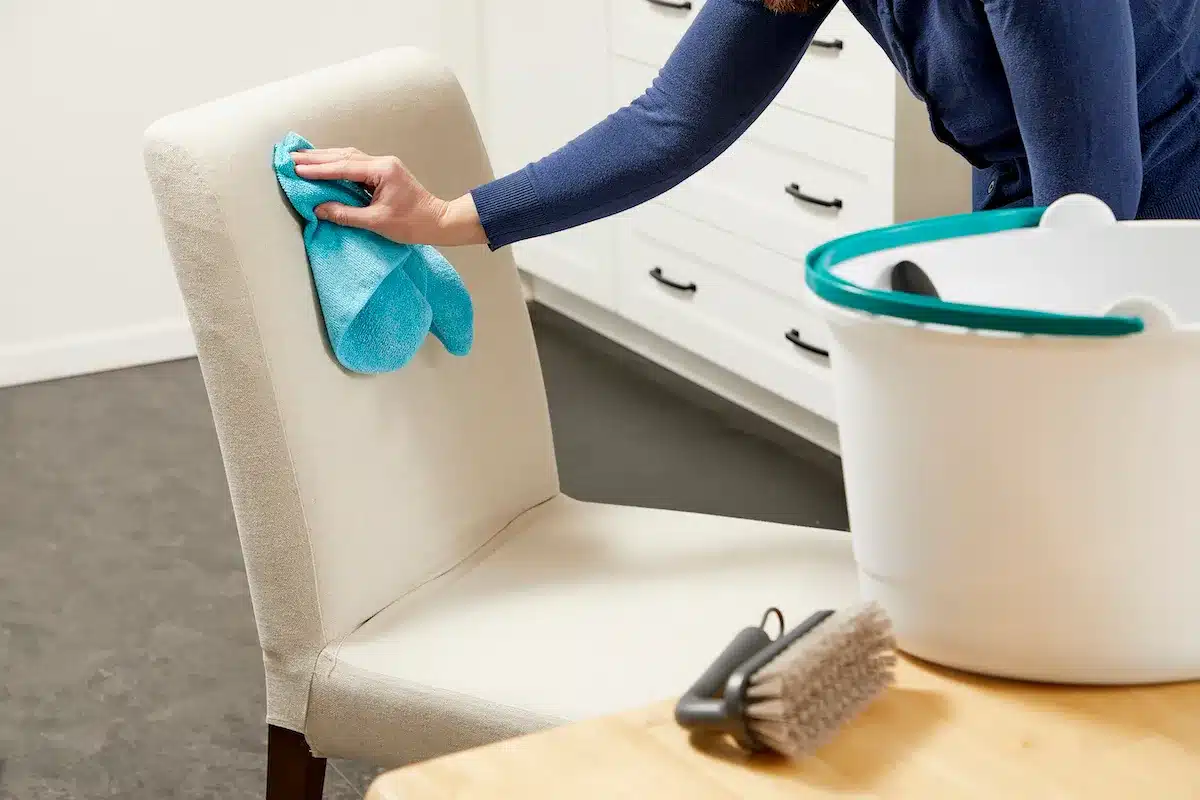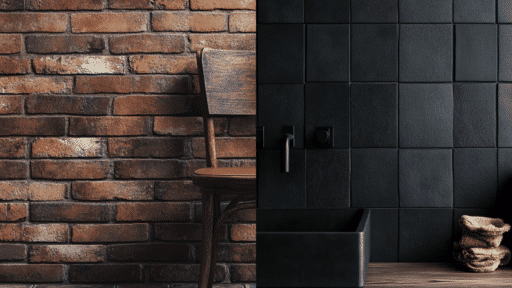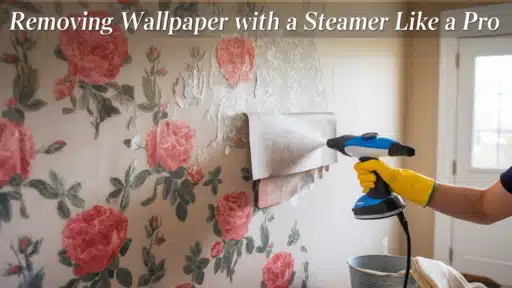Stains on your favorite couch? Don’t worry!
Keeping your furniture clean doesn’t have to be a chore or costly.
With simple items from your kitchen, you can make effective upholstery cleaners at home.
Regular cleaning helps your furniture last longer and look better. Plus, homemade solutions are often gentler on fabrics and safer for your family.
This guide covers easy-to-make cleaners for fabric, faux leather, microfiber, and leather upholstery.
We’ll show you how to tackle common problems like food spills, drink stains, and everyday dirt.
Whether you’re dealing with a coffee mishap on your couch or pet odors on your car seats, we’ve got you covered.
Let’s dive into these practical, budget-friendly ways to keep your upholstery looking fresh and clean.
Overview of DIY Upholstery Cleaning
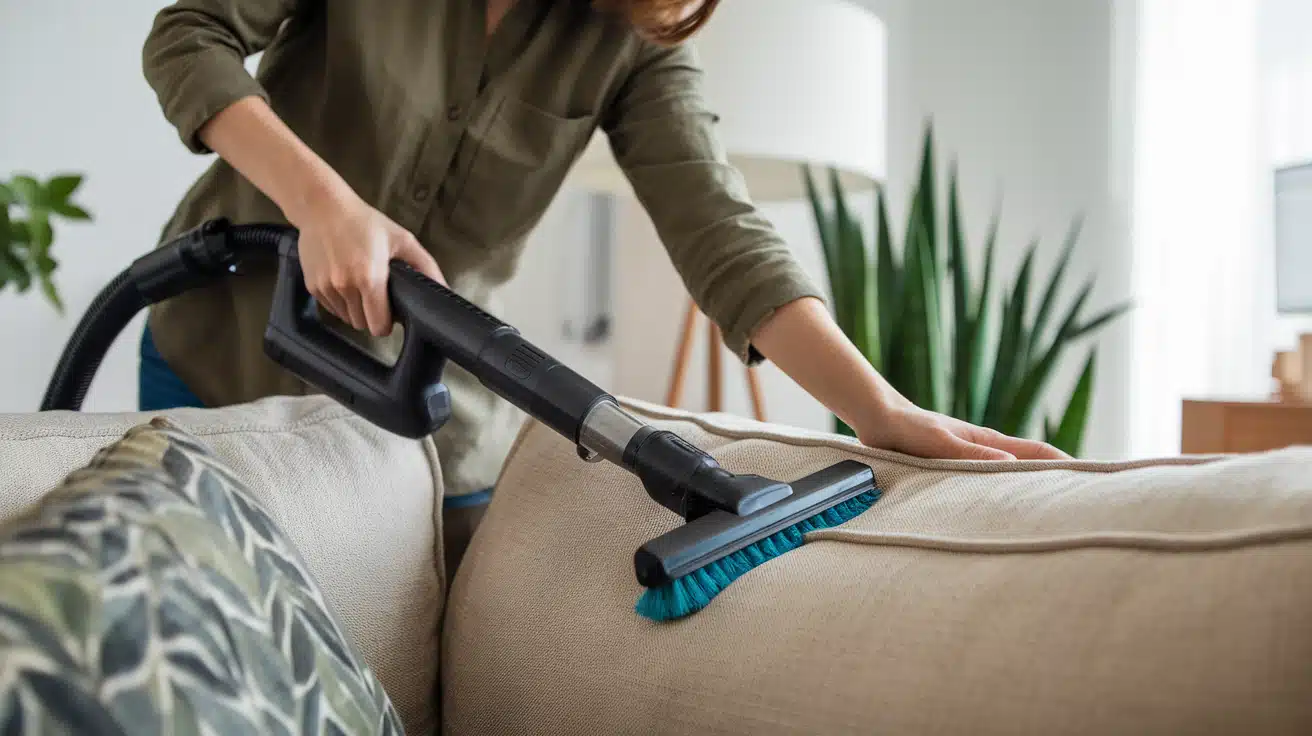
Making your upholstery cleaner at home is a smart choice for many reasons.
It’s cheaper than buying cleaners from the store, better for the environment, and often safer for your family and pets.
These homemade solutions work well on many common stains and can be used on most furniture fabric types.
Homemade cleaners can handle everyday stains like coffee spills, food marks, and pet accidents.
They’re safe for most furniture fabrics, but checking your furniture’s care label first is always wise.
These DIY cleaners are often less likely to cause color fading or fabric damage than strong commercial products.
Why DIY Upholstery Cleaners?
- Making your upholstery cleaner saves money.
- You don’t need to buy pricey cleaning products – use what’s in your pantry.
- These homemade solutions are usually safer around kids and pets because they don’t contain harsh chemicals.
- They work well on different kinds of fabric, from cotton to microfiber.
- The best part about DIY upholstery cleaners is that you probably already have what you need.
- Common household items like dish soap, white vinegar, and rubbing alcohol make great cleaners.
- These simple ingredients can tackle tough stains without damaging your furniture.
- Plus, you know exactly what’s in your cleaner, so there are no mystery chemicals to worry about.
Understanding Upholstery Codes
Before you start cleaning your furniture, it’s crucial to know what type of fabric it is. Furniture makers use special codes to tell you how to clean the fabric safely.
These codes are usually found on a tag under the cushions or on the bottom of the furniture.
- W: This code means you can use water-based cleaners. Most homemade solutions using water, mild soap, or vinegar are safe for these fabrics.
- S: The “S” stands for solvent. These fabrics need dry cleaning or solvent-based cleaners.
- W/S: This code gives you more options. You can use either water-based or solvent-based cleaners. It’s best to start with the gentler water-based options first.
- X: This is the trickiest code. It means the fabric should only be vacuumed or brushed lightly.
Importance of Checking Codes
- Always check the upholstery code before you start cleaning.
- Using the wrong type of cleaner can lead to water stains, color fading, or fabric damage.
- If you can’t find the code or are unsure, test your cleaner on a hidden spot first.
- Please wait for it to dry completely to ensure it doesn’t cause any problems.
- When in doubt, it’s always safer to call a professional cleaner rather than risk ruining your furniture.
Materials Needed (For All Cleaning Methods)
| Category | Materials Needed |
|---|---|
| Cleaning Solutions |
|
| Tools & Equipment |
|
Creating your upholstery cleaner at home is a simple and cost-effective way to keep your furniture looking fresh.
This section will guide you through making and using cleaners for different types of upholstery, starting with a versatile solution for fabric and faux leather.
Fabric and Faux Leather Cleaner
This easy-to-make cleaner works well on cotton, linen, blended fibers, and outdoor fabrics. It’s also suitable for vinyl or faux leather upholstery.
Solution Recipe
- 1/2 cup white vinegar
- 1 teaspoon Castile soap
- 1 cup warm water
Things to Consider
- Test on a small, hidden area before use.
- Ensure fabric is water-safe (Code W or W-S).
Step-by-Step Application
1. Prepare the Cleaning Solution
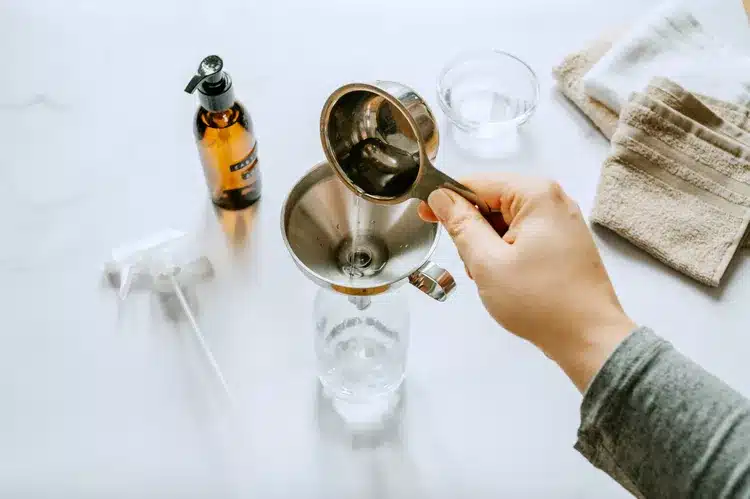
- Pour 1/2 cup white vinegar into a clean spray bottle
- Add 1 teaspoon Castile soap
- Fill with 1 cup warm water
- Gently shake to mix the ingredients
2. Vacuum the Upholstery
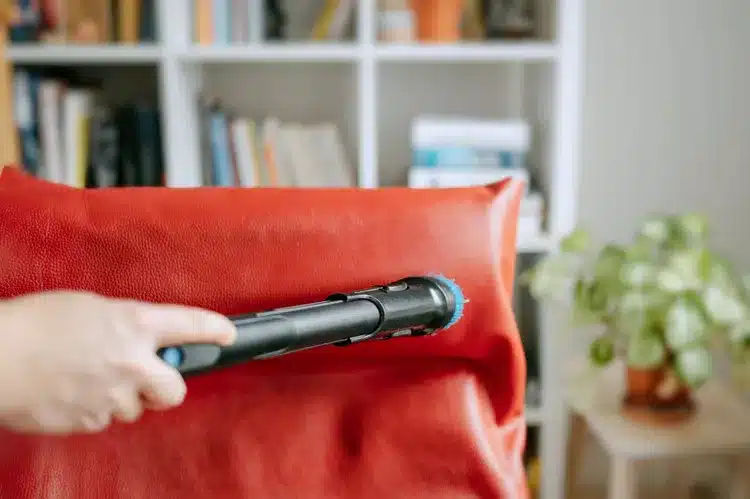
- Use the upholstery attachment on your vacuum
- Go over the entire surface to remove loose dirt and debris
- Pay extra attention to crevices and seams
3. Apply the Cleaning Solution
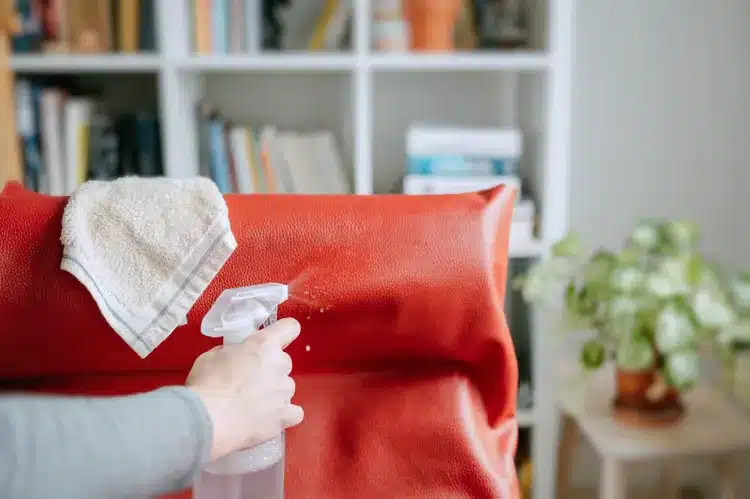
- Start at the top of the furniture piece
- Lightly mist the fabric, avoiding over-saturation
- Work in small sections, about 2 feet square at a time
4. Clean the Upholstery
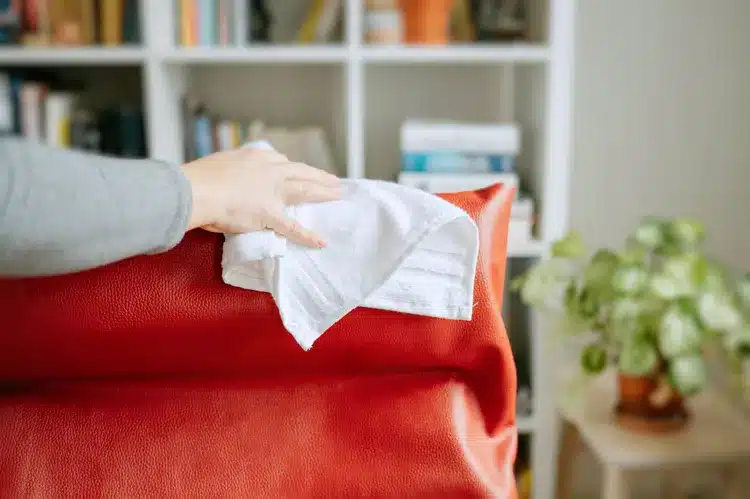
- Use a clean microfiber cloth
- Gently wipe the sprayed area in circular motions
- For stubborn stains, use light pressure to work the solution into the fabric
- Rinse your cloth often in clean water and wring it out well
- Use a dry, clean towel to blot away excess moisture
- Allow the furniture to air dry completely
- You can use fans to speed up the drying process if needed
- Once dry, vacuum the upholstery again to restore the fabric’s texture
- For faux leather, you can buff with a dry microfiber cloth for extra shine
This cleaner is effective for treating common issues like food and drink spills, as well as everyday dirt and grime. Its gentle formula helps maintain the fabric’s quality while cleaning effectively.
Microfiber and Synthetic Upholstery Cleaner
Cleaning microfiber and synthetic upholstery requires a gentle touch to maintain the fabric’s texture and appearance. This section focuses on a simple yet effective cleaner for water-safe synthetic fabrics, helping you keep these materials fresh and clean without harsh chemicals.
Solution Recipe
- 1/4 cup dishwashing liquid
- 4 cups warm water
Things to Consider
- Ensure fabric has a “W” or “W-S” care tag.
- Avoid soaking the fabric to prevent mold growth.
Step-by-Step Application
1. Prepare the Cleaning Solution
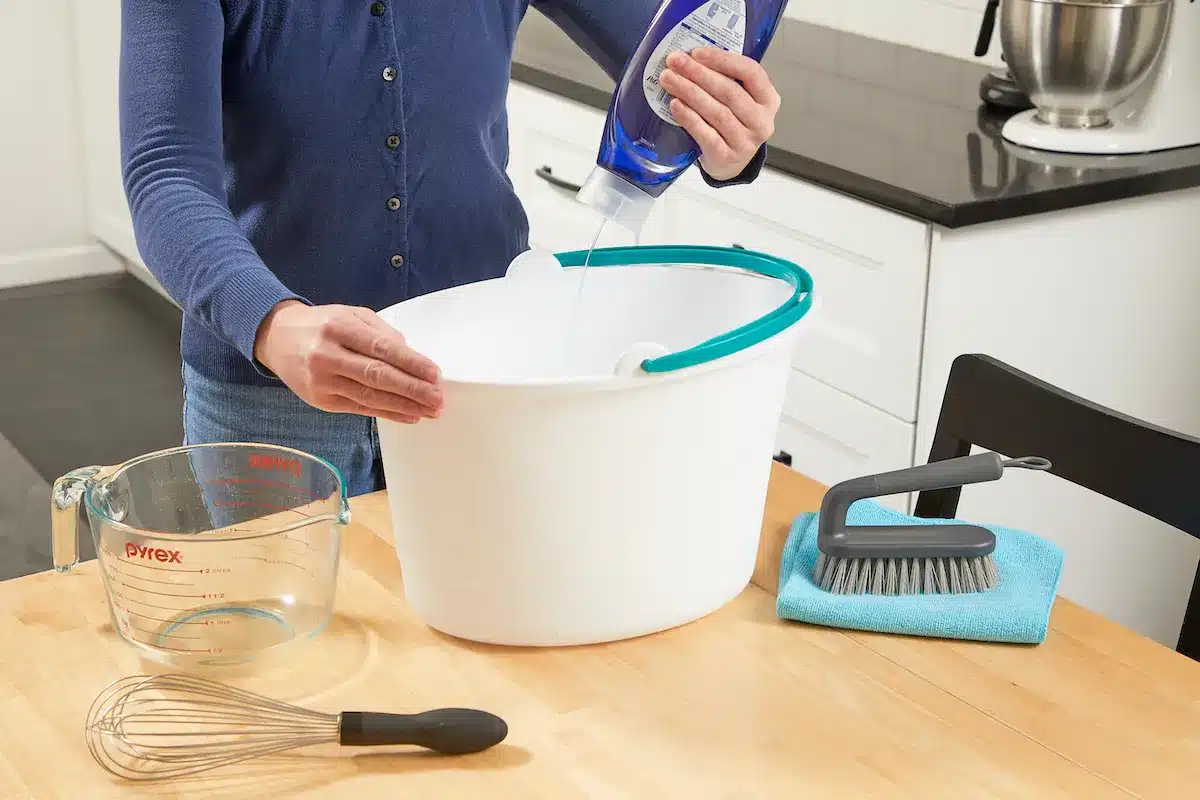
- Pour 4 cups of warm water into a large bowl or bucket.
- Add 1/4 cup of dishwashing liquid.
- The warm water helps dissolve the soap more effectively.
2. Create Suds
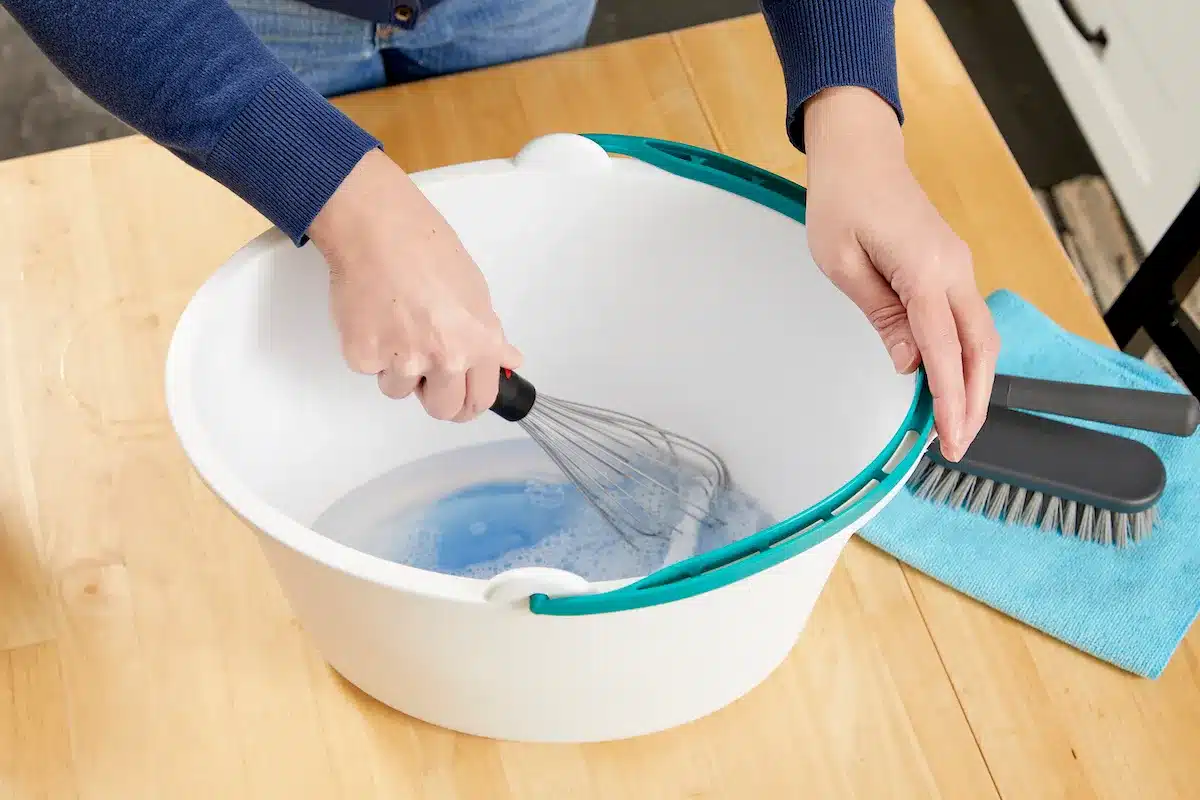
- Use a whisk or electric mixer to whip up a good amount of suds.
- You want lots of foam, as you’ll only be using the suds for cleaning.
3. Vacuum the Upholstery
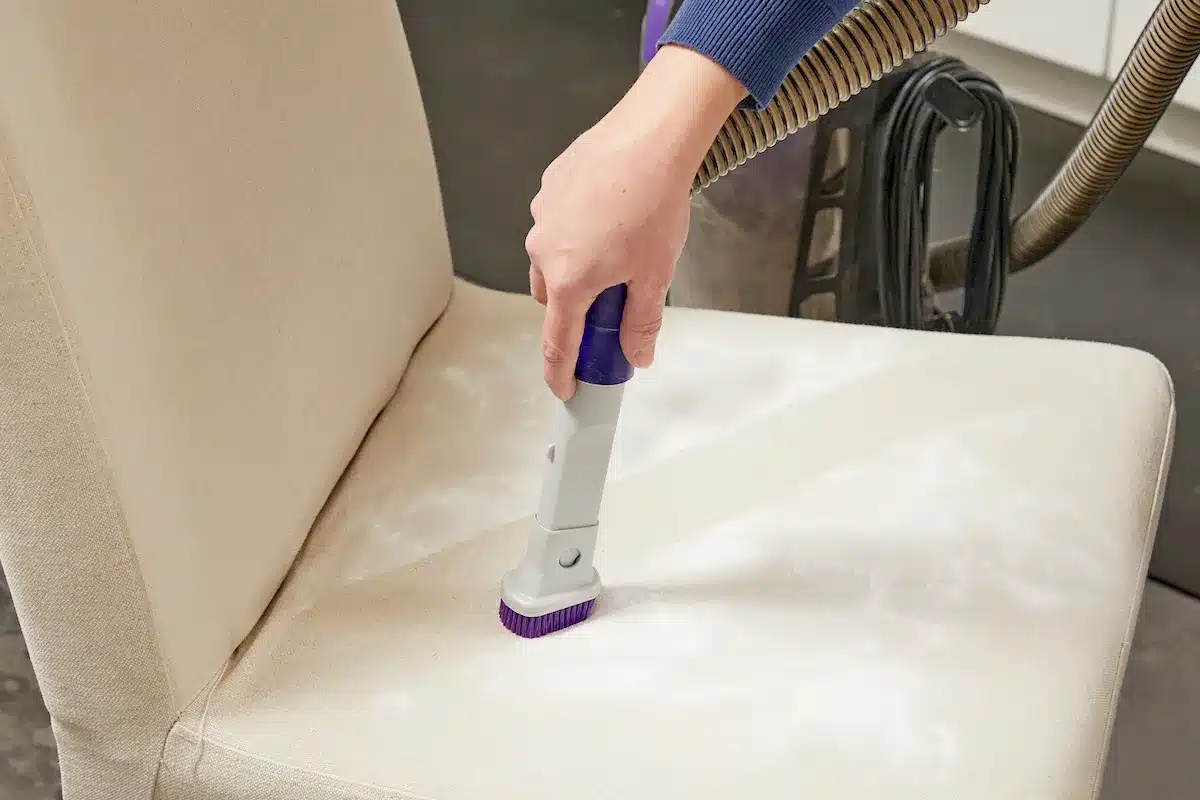
- Before applying any cleaner, use a vacuum cleaner with an upholstery attachment to remove loose dirt, dust, and debris.
- This prevents rubbing these particles into the fabric while cleaning.
4. Dip the Brush in Suds
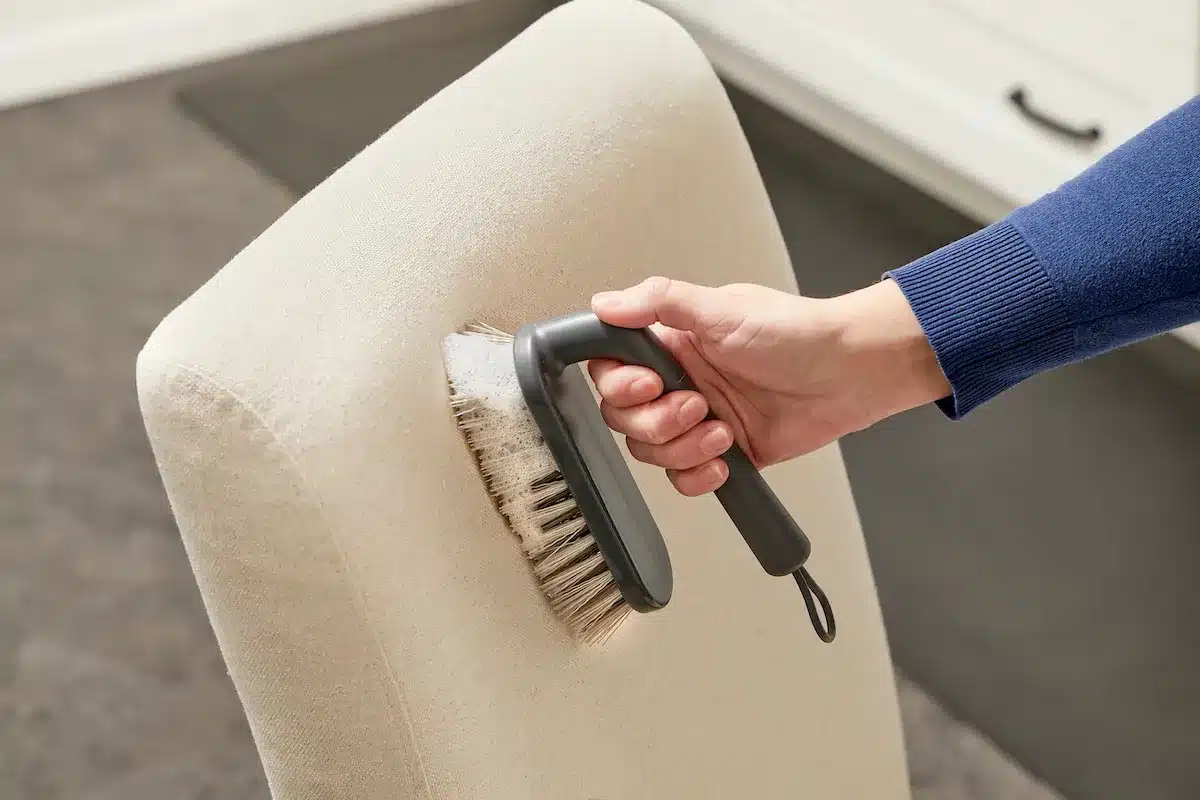
- Take a soft-bristled brush and dip it only into the foamy suds on top of the water.
- Avoid getting the brush wet with the water underneath.
- Begin at the highest point of the furniture piece you’re cleaning.
- This prevents dirty suds from dripping onto already cleaned areas.
- Using light, circular motions, work the suds into the fabric.
- Don’t scrub too hard, as this might damage the fibers.
- Frequently rinse your brush in clean water to remove dirt.
- Shake off excess water, then dip it back into the suds and continue cleaning.
5. Start Cleaning from The Top
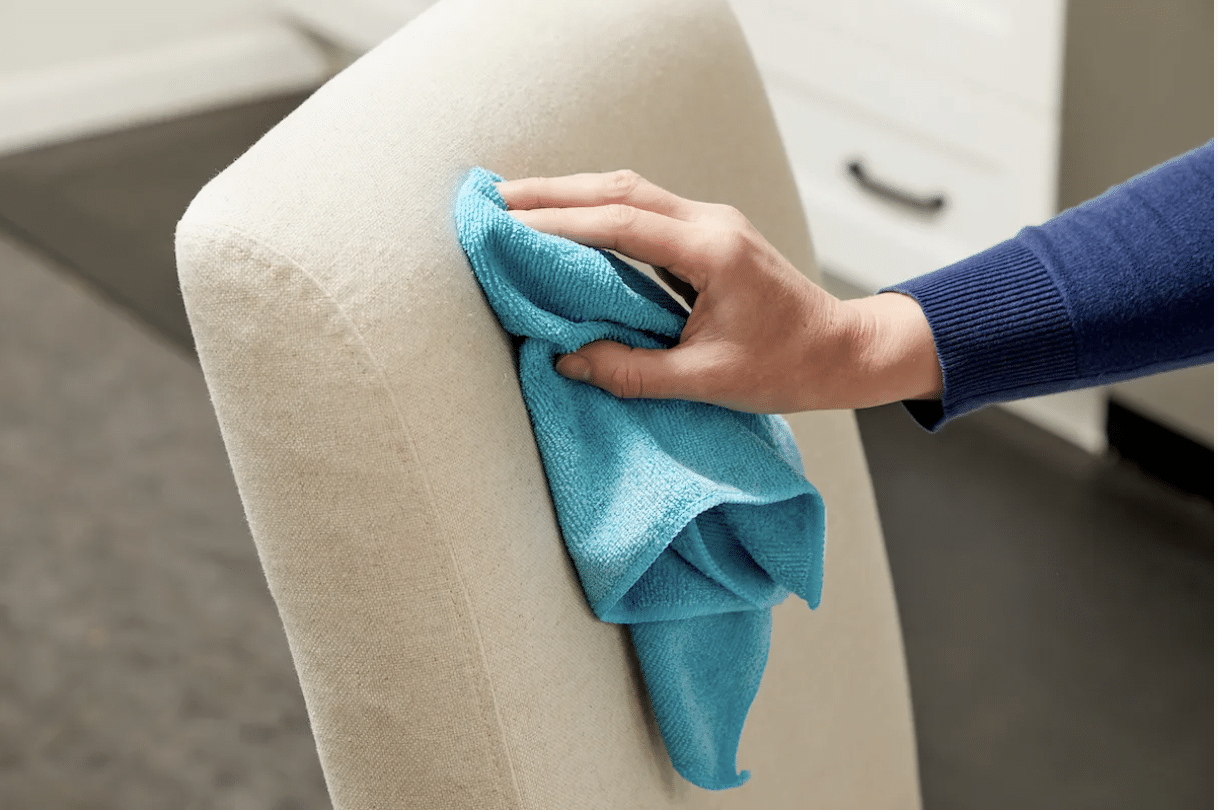
- Once you’ve cleaned a section, use a slightly damp microfiber cloth to remove any remaining suds.
- This acts as a rinse for the fabric.
- Let the upholstery dry naturally.
- Avoid using heat sources like hairdryers, as these can damage some synthetic fibers.
Microfiber and Synthetic Upholstery Cleaner
This cleaner is designed for synthetic fabrics that can’t be cleaned with water-based solutions. It’s particularly effective for microfiber and other synthetic upholstery marked with an “S” tag.
Solution Recipe
- 2 cups isopropyl (rubbing) alcohol
Things to Consider
- Ensure the fabric has an “S” care tag.
- Ensure proper ventilation when using alcohol-based cleaners
Step-by-Step Application
1. Prepare the Cleaner
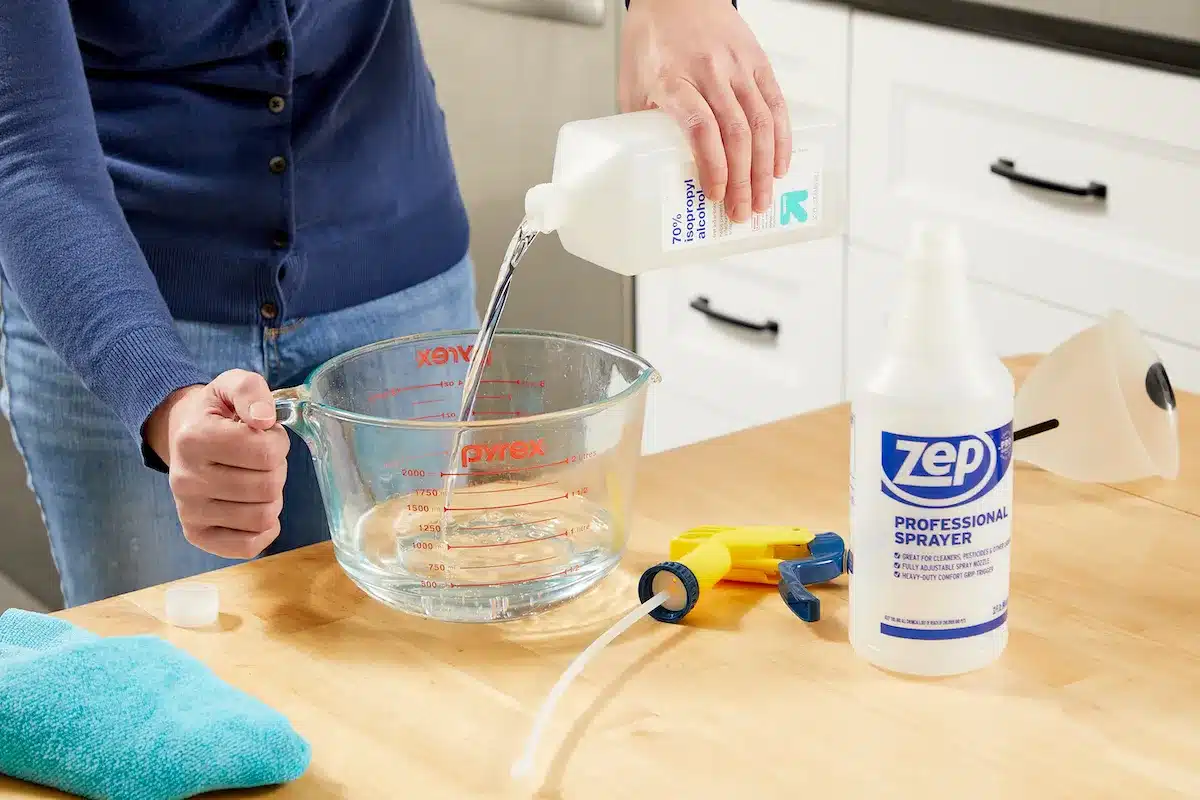
- Pour 2 cups of isopropyl alcohol into a clean spray bottle
- Open windows or turn on fans for good airflow
- Vacuum the upholstery to remove loose dirt and debris
2. Apply the Cleaner
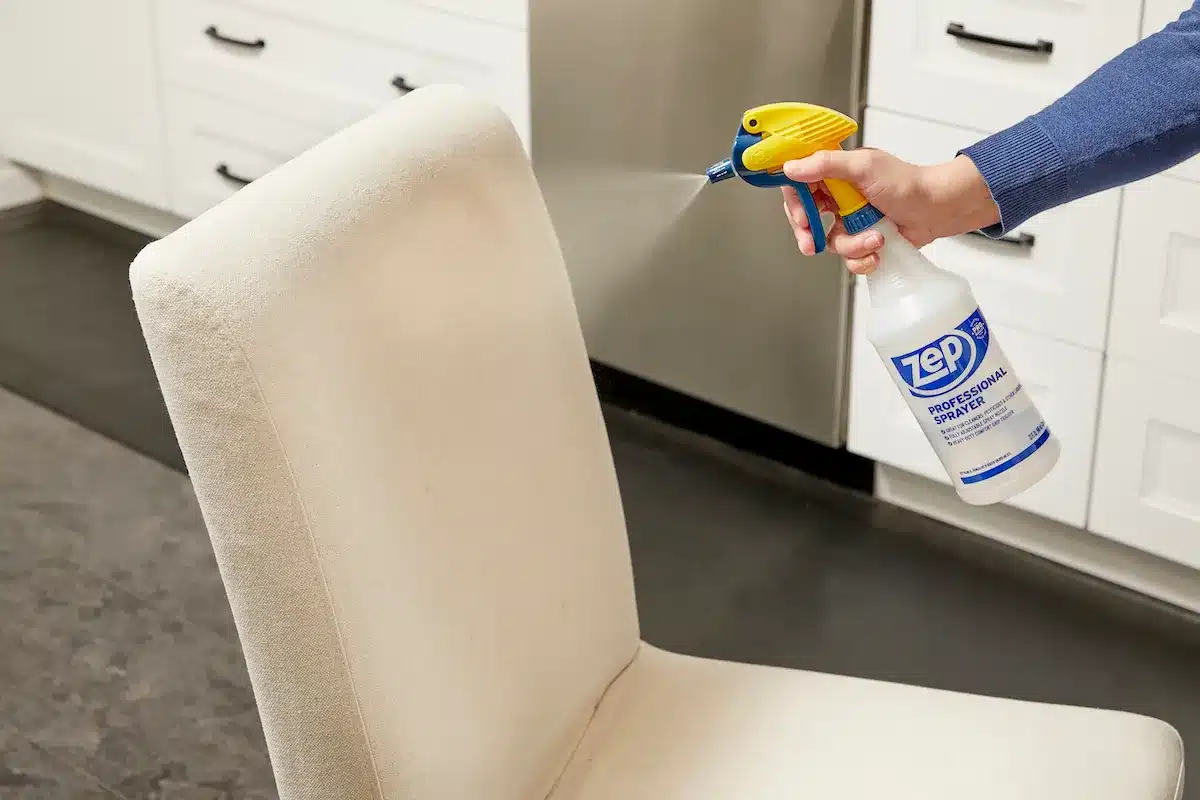
- Starting at the top of the furniture, lightly mist the fabric
- Work in small sections, about 1-2 feet at a time
- Avoid soaking the fabric
3. Clean the Upholstery
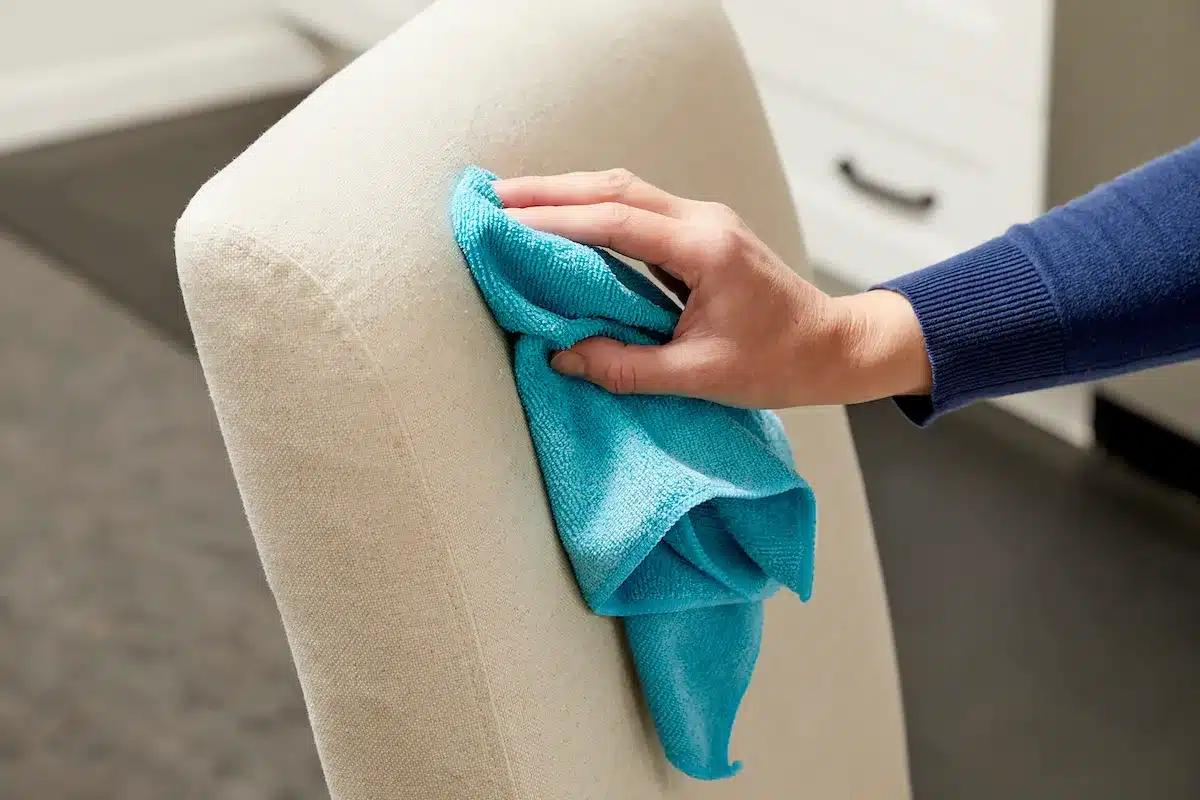
- While the fabric is damp, use a soft-bristled brush
- Gently scrub in circular motions to lift dirt and stains
- Rinse the brush often in clean water and shake out excess
- Allow the upholstery to air dry completely
- You can use fans to speed up the process if needed
This method is especially good for treating tough stains like ink, grease, and oil on synthetic fabrics. The alcohol-based solution helps break down these stubborn marks without damaging the fabric.
Remember, never use this method near open flames or heat sources, as isopropyl alcohol is flammable. Always ensure good ventilation when using this cleaner
Leather Upholstery Cleaner
This gentle yet effective cleaner helps maintain the softness and shine of leather upholstery. It’s suitable for most leather furniture, but avoid using it on natural suede.
Solution Recipe
- 1/2 cup olive oil
- 1/4 cup white vinegar
Things to Consider
- Do not use on suede or nubuck leather.
- Shake the bottle well before each use.
Step-by-Step Application
1. Make the Cleaning Solution
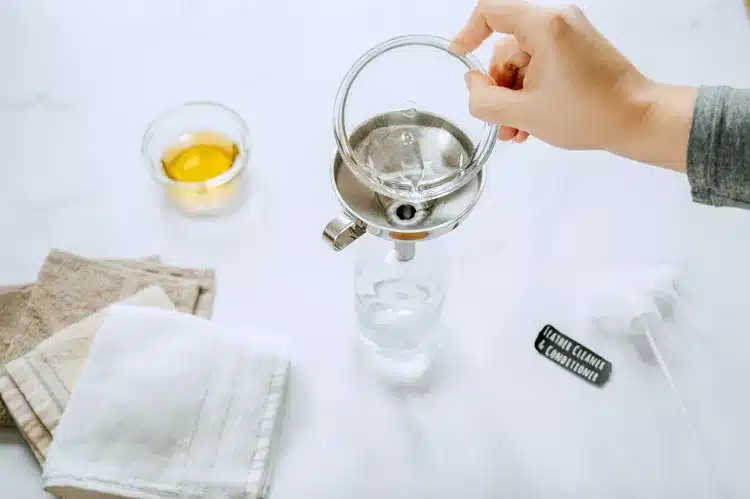
- Pour 1/2 cup olive oil into a clean spray bottle
- Add 1/4 cup white vinegar
- Label the bottle as “Leather Cleaner and Conditioner”
2. Apply the Solution
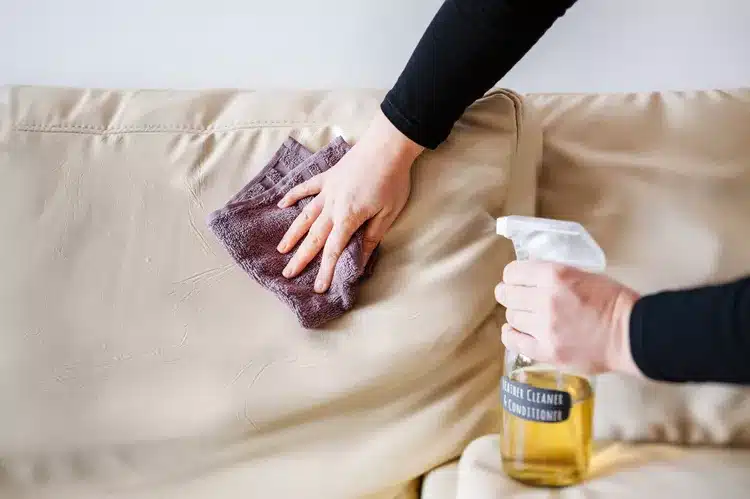
- Vacuum the upholstery to remove loose dirt
- Shake the bottle well to mix the ingredients
- Working in small areas, lightly mist the leather surface
- Avoid over-wetting the leather
3. Clean the Upholstery
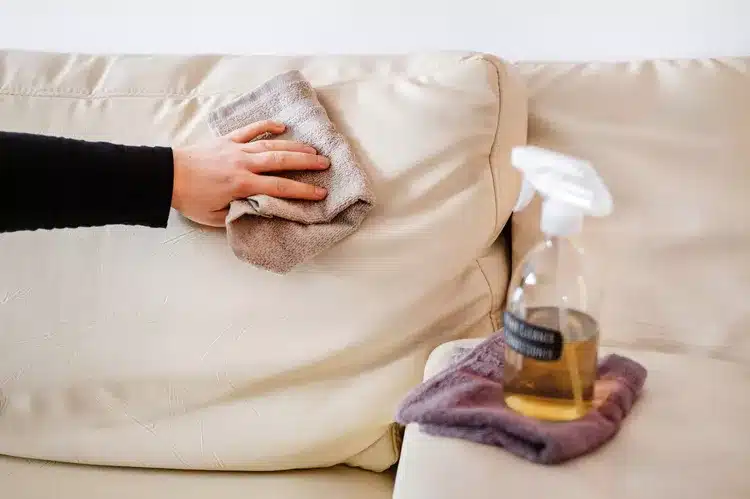
- Use a clean microfiber cloth
- Gently wipe the sprayed area in circular motions
- This removes dirt while spreading the oil evenly
- Use a fresh, dry microfiber cloth
- Wipe the cleaned area to absorb any leftover solution
- With another dry microfiber cloth, buff the leather
- Use gentle, circular motions to bring out the shine
- This step helps distribute the olive oil, keeping the leather soft
You might need to use a specialized leather cleaner before applying this homemade conditioner for tough stains or very dirty leather. Always handle leather with care to maintain its quality and extend its life.
Conclusion
Keeping your upholstery clean is now easier than ever with these DIY solutions.
These homemade cleaners tackle common stains effectively and affordably, from fabric to leather.
Regular cleaning enhances your furniture’s look and extends its life.
By using these gentle, homemade mixtures, you can avoid harsh chemicals that might harm your upholstery over time.
Whether you need a quick baking soda freshener or a versatile fabric cleaner, you have tools to maintain your furniture’s beauty.
Remember, consistent care is key.
Why not start today? Pick a cleaner and give your favorite piece of furniture some attention.
Your home will feel fresher, and you’ll be satisfied with a well-done job.

